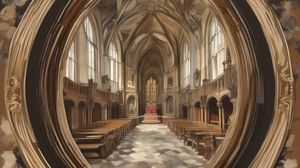
Ada Lovelace's Blue Plaque in St James's commemorates the pioneering mathematician who is often regarded as the world's first computer programmer. This plaque is a tribute to her significant contributions to early computing, specifically recognizing her work on Charles Babbage's Analytical Engine.
Ada Lovelace, born in 1815, was the daughter of the famous poet Lord Byron and his wife, Annabella Milbanke. Despite this literary background, Lovelace found her passion in mathematics and worked closely with Babbage, considering him her mentor.
Her visionary notes on Babbage's proposed machine included what many consider the first algorithm intended for implementation on a computer, a striking achievement in the mid-1800s that predates modern computing by over a century.
Interestingly, Ada's overreliance on laudanum, a popular medicinal concoction containing opium, both facilitated and hindered her groundbreaking work due to its debilitating side effects, showcasing the complex nature of scientific pursuit in the Victorian era.
Beyond her technical achievements, Ada Lovelace was a futuristic thinker. She speculated on the capability of computers to go beyond mere number-crunching to potentially create music and art, an inspiring foresight that resonates with today's technological landscape.

Making the Most of Your Visit:
Set aside a moment to really appreciate this little piece of history. Its specific location in St James's is charming and has a special significance, as Lovelace engaged with many influential figures of her time nearby, making it a cozy step back into her world.
While you're in the area, take a second to imagine the atmosphere of the Victorian era and how Lovelace might have walked these very streets, contemplating her next mathematical breakthrough. It adds a tangible richness to your visit.
If you're into photography, try capturing the plaque in the soft morning light or during the golden hour near sunset. It makes for a truly stunning image, and you might avoid the busiest times of day, too.
Consider reading up a little about Charles Babbage and his Analytical Engine before you visit. Understanding their collaboration can really enhance your appreciation of the plaque, bringing Ada Lovelace's notable achievements to life.
Take note of the nearby architecture and historical context. This area of London is rich with beautiful and historically significant buildings, reflecting the time of Lovelace herself, so it's not just about the plaque but the whole environment she was part of.

Visiting Times & Costs:
Ada Lovelace's Blue Plaque in St James's is publicly accessible at all times, as it is located on a building facade. There is no entrance fee to view the plaque as it is situated in a public space.
Visitors should be aware that since the plaque is mounted on a building exterior, accessibility considerations mainly depend on the adjoining street pavement and any potential obstructions in the area.

Address & Map:

Nearby:























